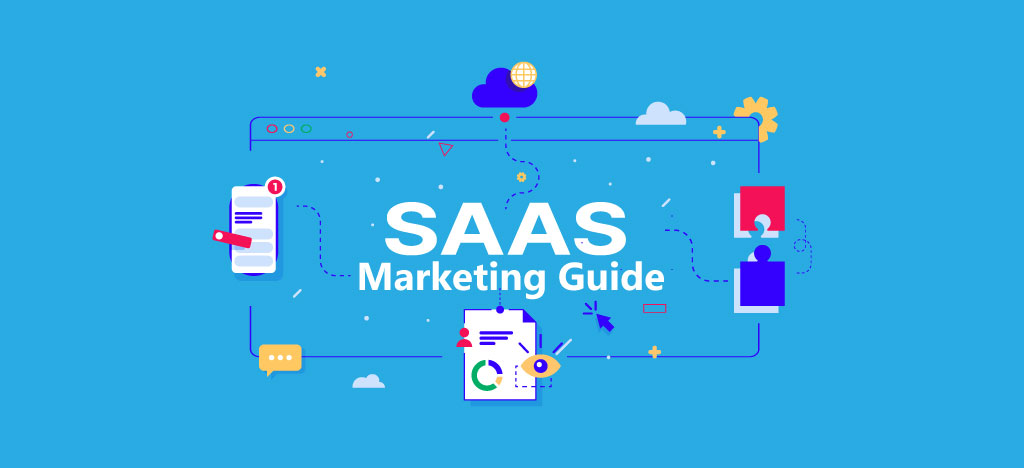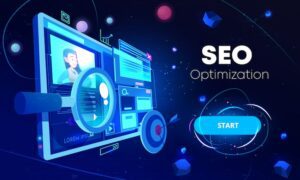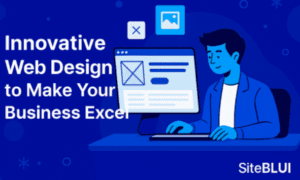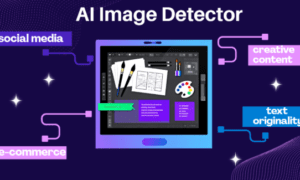The Definitive Guide to Digital Marketing for SaaS
Welcome to the world of Software as a Service, a place where the product is code, the office is the cloud, and the rules of marketing are fundamentally different. If you are used to marketing physical products or one-off services, you are in for a ride. The landscape here is built on subscriptions, relationships, and ever-evolving value. Simply taking a traditional marketing playbook and applying it to a SaaS business is like trying to fit a square peg in a round hole; it is clumsy, inefficient, and ultimately, it just does not work. The entire customer journey is unique, stretching from the initial moment of awareness not to a single purchase, but to a long-term partnership that ideally lasts for years. This requires a complete shift in mindset, away from the transactional and toward the relational. It is less about the quick win and more about building a sustainable engine for growth that hums along, attracting, converting, and delighting customers month after month. The metrics that matter are different, the customer expectations are higher, and the connection between the product and its marketing is far more intertwined. Understanding this unique ecosystem is the first and most critical step toward building a brand that does not just survive, but thrives.
Why your saas needs a specialized marketing approach
Marketing a product that customers rent rather than own demands a radical departure from traditional strategies. The core of the Software as a Service model is the ongoing relationship, which hinges on delivering continuous value to justify that recurring monthly or annual fee. Unlike a one-time purchase, the initial sale is not the end of the journey; it is the very beginning. This dynamic fundamentally changes the economic equation. Your focus shifts from maximizing the profit of a single transaction to maximizing the lifetime value (LTV) of a customer. This means your marketing efforts cannot stop once a credit card is entered. In fact, that is when some of the most important marketing begins. You are constantly re-selling your product, reminding users of its value, introducing new features, and ensuring they are successful. If you fail, they churn, and that recurring revenue stream, the lifeblood of any SaaS company, dries up. This is a stark contrast to selling a refrigerator, where the post-purchase relationship might be limited to a warranty and the occasional recall notice. Here, the customer’s success is your success, and your marketing must reflect that symbiotic partnership every single day, through every email, every blog post, and every interaction.
This subscription-based reality also reshapes the entire marketing funnel. The goal is not just to generate a lead, but to generate a qualified lead who is likely to convert from a free trial or freemium plan to a paid subscription and stick around for the long haul. This requires a deep understanding of your ideal customer profile and a marketing message that speaks directly to their pain points, promising a tangible solution. The sales cycle can be incredibly fast for simple, low-cost tools or painstakingly long for complex, enterprise-level platforms. Your digital marketing strategy must be flexible enough to accommodate this, nurturing leads with different levels of intent over varying periods. You are not just selling features; you are selling an outcome, a better way of working, a solution to a nagging problem. This requires an educational and consultative approach. Your marketing materials must serve as a resource, helping potential customers understand their own challenges better and guiding them toward the realization that your software is the indispensable tool they have been missing. It is a game of patience, value, and trust, played on a field where the goalposts are constantly moving.
Building the foundation of your SaaS marketing plan
Before you write a single line of ad copy or design a landing page, you must lay a solid foundation. This foundational work is what separates the SaaS companies that achieve exponential growth from those that stall and burn through their funding. It all starts with an almost obsessive focus on your Ideal Customer Profile (ICP). This is not a vague demographic sketch; it is a detailed portrait of the user who will gain the most value from your software and, in turn, provide the most value to your company. You need to understand their industry, their job title, the tools they already use, the challenges they face daily, and what “success” looks like for them. Where do they get their information? What online communities are they a part of? Who do they trust? Answering these questions allows you to tailor every aspect of your marketing, from the channels you use to the language in your emails. Without a crystal-clear ICP, you are just shouting into the void, hoping someone who cares will hear you. A well-defined ICP ensures your marketing budget is spent efficiently, reaching the people who are most likely to become not just customers, but passionate advocates for your brand.
Once you know exactly who you are talking to, you need to perfect what you are going to say. This is where your value proposition and market positioning come into play. Your value proposition is a clear, concise statement that explains the unique benefit you provide, how you solve your customer’s problem, and what distinguishes you from the competition. It is the core of your messaging and should be front and center in your marketing. It should not be a list of features, but a promise of an outcome. Instead of saying “Our software has a drag-and-drop interface,” say “Build a professional website in under an hour without writing a single line of code.” See the difference? One describes a function, the other sells a dream. Positioning, meanwhile, is about carving out a specific space in the market’s mind. Are you the most affordable option, the most powerful and feature-rich platform, or the best solution for a very specific niche? Trying to be everything to everyone is a recipe for disaster. A strong position makes it easy for your ideal customers to understand why they should choose you over all other alternatives, giving your marketing efforts a sharp, effective edge.
- Define your key performance indicators early
Before launching any campaign, it is crucial to establish what success looks like in measurable terms. For a SaaS business, this goes beyond simple website traffic or lead counts. You need to focus on metrics that directly reflect business health and growth, such as Monthly Recurring Revenue (MRR), Customer Acquisition Cost (CAC), and Customer Lifetime Value (LTV). By defining these KPIs from the outset, you create a framework for accountability and data-driven decision-making. Every marketing activity can then be evaluated based on its direct impact on these core numbers, allowing for continuous optimization and efficient allocation of resources toward what truly works. - Map out the entire customer journey
Understanding the path a user takes from initial awareness to becoming a loyal, paying customer is fundamental. This involves mapping every potential touchpoint, from the first time they read a blog post or see an ad, through their trial or demo experience, to their onboarding process and ongoing use of the product. By visualizing this journey, you can identify potential friction points and opportunities to deliver value at each stage. This detailed map ensures your marketing efforts are cohesive and supportive, guiding the user seamlessly from one step to the next and creating a positive, engaging experience that encourages conversion and retention. - Align your marketing and product teams
In SaaS, the product itself is one of your most powerful marketing tools. A seamless user experience, intuitive design, and features that “wow” new users can drive word-of-mouth growth more effectively than any ad campaign. This makes tight alignment between the marketing and product teams absolutely essential. Marketing can provide the product team with valuable insights into customer needs and market trends, while the product team can build features and experiences that marketing can then leverage in its campaigns. This symbiotic relationship ensures that the product promise made by marketing is consistently delivered upon, leading to higher customer satisfaction and lower churn rates.
Mastering content marketing to attract and educate users
In the universe of digital marketing for SaaS, content is not just king; it is the entire kingdom. Your potential customers are not looking for a sales pitch; they are looking for solutions to their problems. They are hungry for knowledge, insights, and resources that can help them do their jobs better, faster, or more efficiently. This is where content marketing shines. By creating high-quality, genuinely helpful content, you position your brand as a trusted authority and an indispensable resource in your niche. This approach builds trust and rapport long before you ever ask for a sale. Instead of pushing your product, you are pulling customers in by providing immense value upfront. This could be a detailed blog post that breaks down a complex industry trend, a comprehensive ebook that serves as a guide to solving a common business challenge, or a case study that shows a real-world example of how a similar company achieved success. The goal is to become the go-to source for information in your field, so when your audience is finally ready to invest in a software solution, your brand is the first one they think of.
The beauty of a robust content strategy is its versatility and its long-term impact. A single, well-crafted piece of content can be repurposed and atomized into dozens of smaller assets. A webinar, for instance, can be turned into a video on your website, a series of short clips for social media, a blog post summarizing the key takeaways, and a downloadable slide deck. This allows you to maximize the reach and lifespan of your efforts, engaging different segments of your audience on their preferred platforms. The content you create should map directly to the different stages of the customer journey. For those in the awareness stage, top-of-funnel content like blog posts and infographics can introduce them to new concepts and make them aware of a problem. For those in the consideration stage, middle-of-funnel content like webinars, white papers, and comparison guides can help them evaluate their options. And for those in the decision stage, bottom-of-funnel content like case studies, free trials, and demos can provide the final push they need to convert. This strategic approach ensures you are delivering the right message to the right person at the right time.
Supercharging growth with strategic paid acquisition
While content and SEO build a powerful foundation for long-term, organic growth, there are times when you need to step on the accelerator. This is where strategic paid acquisition comes in. When executed correctly, paid channels like search engine advertising and social media campaigns can provide a predictable and scalable source of high-quality leads, free trial sign-ups, and demo requests. The key word here is “strategic.” Simply throwing money at ads without a clear plan is one of the fastest ways to deplete your marketing budget with little to show for it. For SaaS companies, paid acquisition must be a finely tuned machine, constantly optimized to keep the Customer Acquisition Cost (CAC) well below the Customer Lifetime Value (LTV). This means you need laser-focused targeting to ensure your ads are only shown to your Ideal Customer Profile. It also means your ad copy and landing pages must speak directly to their pain points and clearly articulate your value proposition, compelling them to take that next step.
The platforms you choose will depend heavily on where your target audience spends their time. For users who are actively searching for a solution to a problem they already know they have, search engine ads can be incredibly effective. Targeting specific, high-intent keywords can place your solution directly in their path at the exact moment they are looking for it. On the other hand, social media platforms are powerful for reaching potential customers who may not even be aware that a solution like yours exists. You can target users based on their job titles, the companies they work for, their interests, or their engagement with similar brands. This allows you to generate demand and introduce your software to a whole new audience. Regardless of the platform, the principles remain the same. Start with small, controlled experiments, measure everything relentlessly, and be prepared to iterate. Test different ad creatives, headlines, targeting parameters, and landing page designs until you find a winning combination that delivers a positive return on investment.
- Focus on retargeting campaigns relentlessly
A user visiting your pricing page or starting a free trial sign-up without finishing is not a lost cause; they are a warm lead. Retargeting allows you to bring these high-intent individuals back into your funnel. By showing them targeted ads across the web and on social media, you can remind them of the value you offer and encourage them to complete the conversion. These campaigns are often among the most cost-effective forms of paid advertising because you are marketing to an audience that has already demonstrated a significant level of interest in your product, making them far more likely to convert. - Utilize ad copy that sells the outcome
Your ad copy should not be a boring list of your software’s features. Instead, it must focus on the transformation or outcome that your customer will experience. Speak directly to their aspirations and frustrations. Instead of “Our software has robust reporting,” try “Make data-driven decisions in minutes, not hours.” This benefit-oriented language resonates on a much deeper emotional level, capturing attention in a crowded digital space and making your solution feel indispensable. It shifts the focus from what your product is to what your product does for the customer, which is a far more compelling proposition. - Optimize landing pages for a single action
When a user clicks on your ad, the landing page they arrive on should have one clear and singular goal, whether it is to start a free trial, book a demo, or download a resource. Do not distract them with navigation bars, links to other blog posts, or multiple competing calls to action. Every element on the page, from the headline to the copy to the imagery, should work together to persuade the user to take that one specific action. A focused, frictionless landing page dramatically increases conversion rates, ensuring you get the maximum value from every single click you pay for.
Leveraging SEO for long-term organic visibility
Search Engine Optimization is the marathon of digital marketing for SaaS, not the sprint. While paid ads can deliver instant traffic, SEO is the practice of building a sustainable, long-term asset that generates highly qualified organic traffic day after day, without you having to pay for every single click. For a SaaS business, a strong SEO strategy is non-negotiable. It is how you capture demand from potential customers who are actively using search engines to find solutions to their problems. The process begins with understanding the language of your customers. What terms are they typing into that search bar? Your keyword research needs to go beyond just your brand name or a generic description of your software category. You must uncover the specific questions, pain points, and “jobs to be done” that your ideal customers have. This means targeting not just “project management software,” but also “how to reduce team bottlenecks” or “best way to track remote team progress.” By targeting these problem-aware and solution-aware keywords, you position your content to appear at every stage of the buyer’s journey.
Building your website’s authority is another critical pillar of SaaS SEO. This is achieved through a combination of creating high-quality, in-depth content and earning backlinks from other reputable websites in your industry. Think of your website as a library on a specific topic. You want to build out comprehensive “topic clusters,” which consist of a central, authoritative “pillar page” on a broad subject (e.g., “A Guide to Email Automation”) supported by numerous “cluster pages” that delve into more specific sub-topics (e.g., “writing effective email subject lines,” “segmenting your email list,” “analyzing email open rates”). This structure signals to search engines that you are an expert on the subject, making it more likely that they will rank your pages highly. Furthermore, technical SEO plays a crucial role. Your website must be fast, mobile-friendly, secure, and easy for search engine crawlers to understand. A poor user experience or technical glitches can negate all your hard work on content and keywords, so ensuring your site’s technical health is paramount for sustained organic success.
The power of email marketing and customer retention
In the SaaS world, acquiring a new customer is just the first step. The real magic, and the path to profitability, lies in keeping that customer happy and engaged for the long term. This is where the often-underestimated power of email marketing comes into its own. It is the primary channel for building and nurturing the customer relationship post-conversion. A well-executed email strategy can transform a new trial user into a paying customer and a paying customer into a passionate brand advocate. The journey starts with a thoughtfully designed onboarding sequence. Instead of just sending a generic “welcome” email, create a series of automated emails that guide the new user through the key features of your software, highlighting the “aha” moments that demonstrate its value. Show them how to accomplish a specific task, share best practices, and celebrate their early wins. A strong onboarding experience dramatically increases the likelihood that a user will fully adopt your product and convert to a paid plan.
Beyond onboarding, email is your workhorse for ongoing customer engagement and retention. You can use it to announce new features, share valuable content that helps users get more out of your platform, and offer exclusive tips and tricks. These communications continuously reinforce the value of their subscription and show that you are invested in their success. Email is also your most critical tool for combating churn. By monitoring user activity, you can identify customers who may be at risk of canceling, such as those whose usage has dropped off. You can then trigger automated email campaigns to re-engage them, perhaps by offering help, showcasing a new use case they had not considered, or reminding them of the core problem your software solves for them. This proactive approach to retention is far more effective and less expensive than constantly trying to replace churned customers with new ones. A smart email strategy turns your customer base into a growing asset, not a leaky bucket.
- Segment your audience for personalization
Sending the same email to every single user is a recipe for low engagement. To make your communication truly effective, you must segment your audience based on factors like their plan type, usage behavior, or the features they use most. This allows you to send highly relevant, personalized messages that resonate with each specific group. A power user might receive an email about advanced features, while a new trial user receives tips for getting started. This level of personalization makes your users feel understood and valued, dramatically increasing open rates and engagement. - Nurture free trial users into customers
The free trial period is the most critical phase in the SaaS customer journey. A strategic email nurture sequence can make all the difference. Your goal is to guide trial users toward their “aha” moment as quickly as possible. Create a series of emails that are part educational, part motivational. Highlight key value propositions, showcase powerful testimonials, and address common questions or friction points. By proactively guiding them and demonstrating the full potential of your software, you significantly increase the chances that they will see its indispensable value and upgrade to a paid plan. - Use email to gather valuable feedback
Your most engaged users are an incredible source of insight for improving your product and your marketing. Use email to actively solicit their feedback. You can send out simple surveys, ask for reviews, or invite them to participate in beta testing for new features. Not only does this provide you with invaluable information that can guide your product roadmap, but it also makes your customers feel heard and invested in your brand’s journey. This creates a powerful feedback loop that fosters loyalty and helps you build a better product for everyone.
Measuring what matters most for SaaS success
In the dynamic world of SaaS, you cannot afford to fly blind. Gut feelings and vanity metrics like social media likes or raw website traffic will not tell you if your business is actually healthy and growing sustainably. To make informed decisions that drive real growth, you need to be tracking a specific set of Key Performance Indicators (KPIs) that are tailored to the subscription business model. Perhaps the most fundamental of these is Monthly Recurring Revenue (MRR). This metric represents the predictable revenue that your business can expect to receive every month. Tracking MRR and its growth rate provides a clear picture of your company’s financial trajectory and overall health. It is the pulse of your business, and every marketing decision should ultimately be evaluated based on its potential impact on this number. Whether you are launching a new ad campaign or a content initiative, you should always be asking, “How will this help us increase our MRR?” This focus keeps your entire team aligned on the primary goal of sustainable revenue growth.
Alongside MRR, two other metrics form the cornerstone of SaaS marketing measurement; Customer Lifetime Value (LTV) and Customer Acquisition Cost (CAC). LTV represents the total revenue you can expect to generate from a single customer throughout their entire relationship with your company. CAC, on the other hand, is the total cost of sales and marketing efforts required to acquire a single new customer. The ratio between these two metrics is one of the most important indicators of a viable SaaS business. A healthy business model requires that the LTV is significantly higher than the CAC, typically by a factor of three or more. If it costs you more to acquire a customer than you will ever earn from them, your business is on an unsustainable path. Relentlessly tracking and optimizing your LTV/CAC ratio is paramount. This involves not only finding more efficient ways to acquire customers to lower your CAC but also focusing on strategies that increase customer satisfaction and reduce churn to improve your LTV. This data-driven approach allows you to scale your marketing efforts confidently, knowing that your growth is both profitable and sustainable.
Frequently Asked Questions
How much should a SaaS company spend on marketing?
There is no single magic number, as the ideal marketing budget depends heavily on your company’s stage of growth and funding. Early-stage startups might reinvest a very high percentage of their revenue into marketing to capture market share quickly. A more established company might aim for a more balanced approach. A common benchmark is to ensure your Customer Acquisition Cost (CAC) is recovered within 12 months and that your Customer Lifetime Value (LTV) is at least three times your CAC. Focusing on this LTV/CAC ratio is a much healthier approach than adhering to a fixed percentage.
What is the most important marketing channel for SaaS?
The “most important” channel is entirely dependent on your Ideal Customer Profile (ICP). If your target audience consists of professionals actively looking for business solutions, then SEO and search engine advertising might be your most critical channels. If you are targeting a specific demographic or professional group that is highly active on a particular social network, then social media marketing and advertising could be your top performer. The best strategy is to test multiple channels, measure performance meticulously, and double down on the ones that deliver the best return on investment for your specific business.
How can I reduce my SaaS churn rate with marketing?
Marketing’s role in reducing churn is centered on communication and value reinforcement. A robust customer onboarding email sequence is crucial for ensuring users understand how to get value from your product right away. Ongoing email marketing that shares best practices, case studies, and new feature announcements keeps your product top-of-mind and continuously demonstrates its worth. You can also use marketing to gather feedback through surveys, creating a loop where customers feel heard and you gain insights to improve the product, which in turn boosts loyalty and reduces churn.
Should my SaaS company focus on inbound or outbound marketing?
For most SaaS businesses, a strong inbound marketing strategy forms the most sustainable and scalable foundation for growth. Creating valuable content through blogs, webinars, and guides attracts potential customers who are already searching for solutions, leading to higher quality leads at a lower long-term cost. Outbound marketing, such as targeted email outreach or advertising, can be very effective for accelerating growth, especially when targeting specific high-value accounts. A blended approach is often best, using inbound to build a consistent pipeline and outbound to pursue strategic growth opportunities.
How long does it take for SaaS SEO to show results?
SEO is a long-term investment in your brand’s organic visibility, not a quick fix. While some initial results, like ranking for long-tail keywords, might be visible within a few months, it typically takes six to twelve months of consistent effort to see significant, impactful results for more competitive terms. The process involves creating high-quality content, building your site’s authority through backlinks, and ensuring technical excellence. Patience and persistence are key, but the payoff is a sustainable stream of high-quality organic traffic that does not depend on continuous ad spend.



































